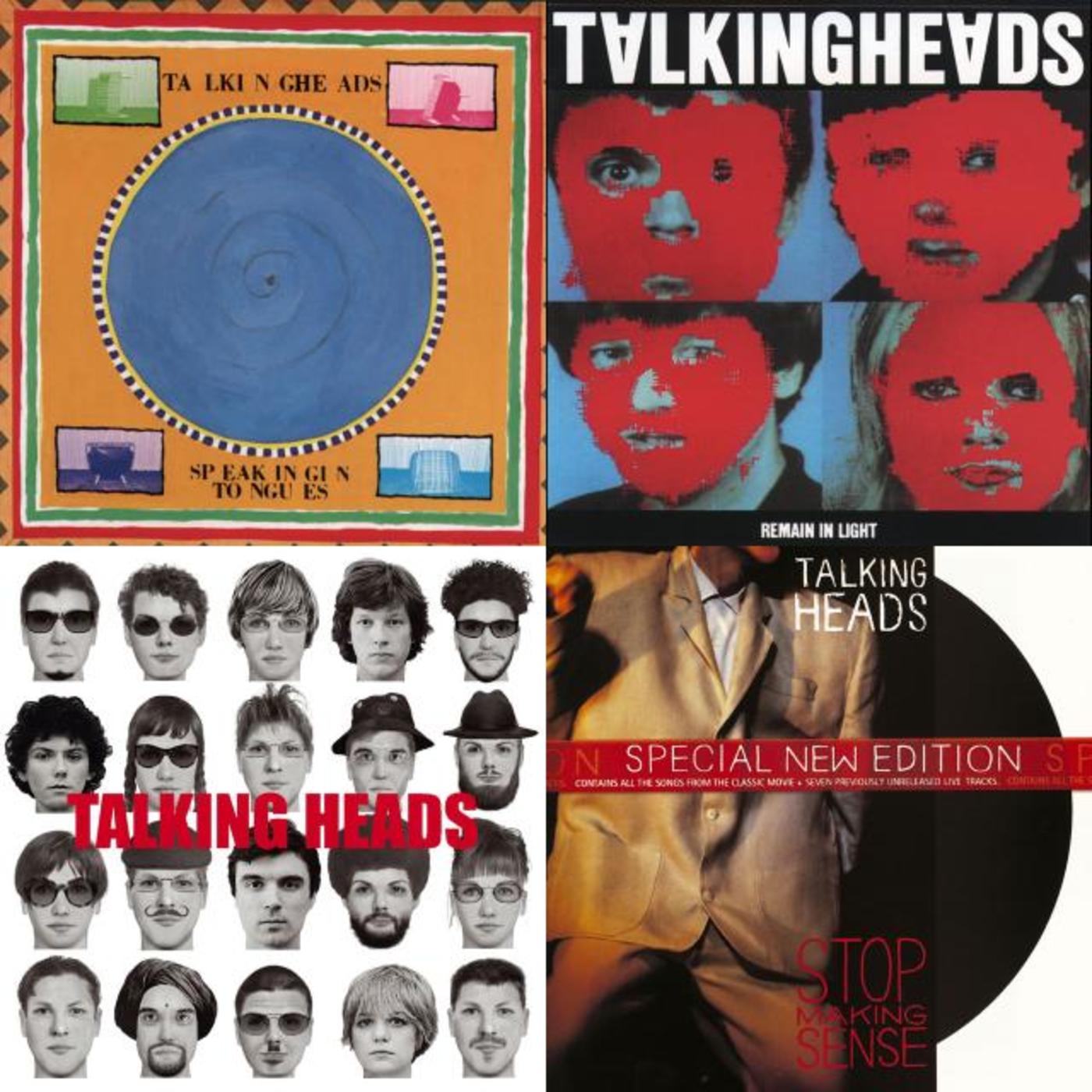Talking Heads

Among the most adventuresome bands in rock history, the Talking Heads drew from funk, minimalism, and African and Brazilian music in promulgating a new sound that was both visionary and visceral. They were invariably challenging and inventive, using infectious rhythms as a form of sorcery to introduce their ever-expanding audience to exotic influences from abroad that they might otherwise have never heard. In so doing, they helped pave the way – along with the likes of Peter Gabriel and Brian Eno – for the "world music" phenomenon of the Eighties and beyond. They also created a body of highly original work, crowned by such albums as Fear of Music and Remain in Light, that didn't so much appropriate its sources as transmute them into something that felt startlingly new and improbably accessible.The Talking Heads emerged from the same New York scene that produced the Ramones, Blondie, Television and countless other bands. Yet whereas the Ramones were street-level and direct, Talking Heads were arty and abstract. Their influences went beyond rock music to include avant-garde composers like Phillip Glass, painters such as Jasper Johns, postmodern choreographers like Merce Cunningham and Twyla Tharp, and such contemporary poets as Amira Baraka. Nonetheless, they shared a do-it-yourself aesthetic in common with their musical peers on the Lower East Side.What set Talking Heads apart was pedigree. The four group members were no scuffling punks. All were college-educated art students: Tina Weymouth and Chris Frantz graduated from the Rhode Island School of Design, Jerry Harrison was a Harvard graduate, and Byrne attended art schools in Rhode Island and Maryland. Their songs might begin with fragments that emerged from spontaneous jams, but they were subsequently pieced together using stratagems more commonly employed by artists than musicians. Weymouth has compared Talking Heads' approach to abstract painting, "where the first color or line or form you put on canvas suggests what you do next." At the same time, she noted, "there's a lot of freedom allowed for other things to happen." This tension between discipline and spontaneity, along with the visual and vocal tics of David Byrne, helped give Talking Heads' music its jittery but playful and ever-surprising aura. Byrne's voice was an extension of his angular, gawky persona; in the context of the New Wave movement, he epitomized the "cool nerd" archetype.Talking Heads came together when Byrne, Frantz and Weymouth moved from Rhode Island to a shared loft in New York City in 1975. Harrison joined before the release of the first album, Talking Heads '77, which contained the early favorites "Psycho Killer" and "Uh-Oh, Love Comes to Town." Brian Eno, the former Roxy Music synthesizer player and "ambient music" pioneer who'd go on to produce U2 and others, was involved with Talking Heads' next three albums: More Songs About Buildings and Food (1978), which contained their hit version of Al Green's "Take Me to the River"; Fear of Music (1979), an album that married African rhythms with Western technology; and Remain in Light (1980), Talking Heads' acknowledged masterpiece. By the last of these, Eno had become an official, albeit temporary, group member, precipitating a widening rift between Byrne and the others over issues of control, credit and direction. All of their albums were fresh and revolutionary but Remain in Light, with its experimental forms and audacious, Afro-Caribbean rhythmic beds, represented a radical breakthrough that reverberated beyond the band to exert an impact on cutting-edge music in general.The group expanded in size for touring purposes in order to perform their more celebratory, polyrhythmic music, and Talking Heads acquired a sizable following in the first half of the Eighties based on their danceable, invigorating live shows. Two live albums, The Name of This Band Is Talking Heads (1982) and Stop Making Sense (1984) – the latter being the soundtrack to the acclaimed, Jonathan Demme-produced concert documentary of the same name – appeared in short order. Sandwiched between them was Talking Heads' highest-charting album, Speaking in Tongues, which contained the Top Ten single "Burning Down the House." Talking Heads, with their background in visual art, made some of rock's most arresting videos, and MTV served as an unlikely ally in making possible their popular breakthrough.In the wake of these successes, Talking Heads regrouped and refocused as a quartet on the smaller-scale, song-oriented albums Little Creatures (1985) and True Stories (1986). The latter served as the soundtrack to a David Byrne film that strung together vignettes about everyday life, and it yielded Talking Heads third hit single, "Wild Wild Life" (#25). The group recorded Naked (1988), in Paris with African musicians. Naked would turn out to be Talking Heads' last album, as inter-band tensions and increasing involvement with solo careers and side bands led to their demise. In 1991, the group recorded four more tracks at New York's Electric Lady Studios, which appeared on the compilation Popular Favorites, 1976-1992: Sand in the Vaseline.Away from Talking Heads, Byrne pursued his interest in world music, especially music from Brazil, and launched his own label, Luaka Bop, dedicated to its spread and preservation. Frantz and Weymouth reconvened their successful dance-pop group, Tom Tom Club (whose 1981 single "Genius of Love" remains a club favorite from that decade). Harrison produced albums for other bands and fronted a group of his own, Casual Gods.

